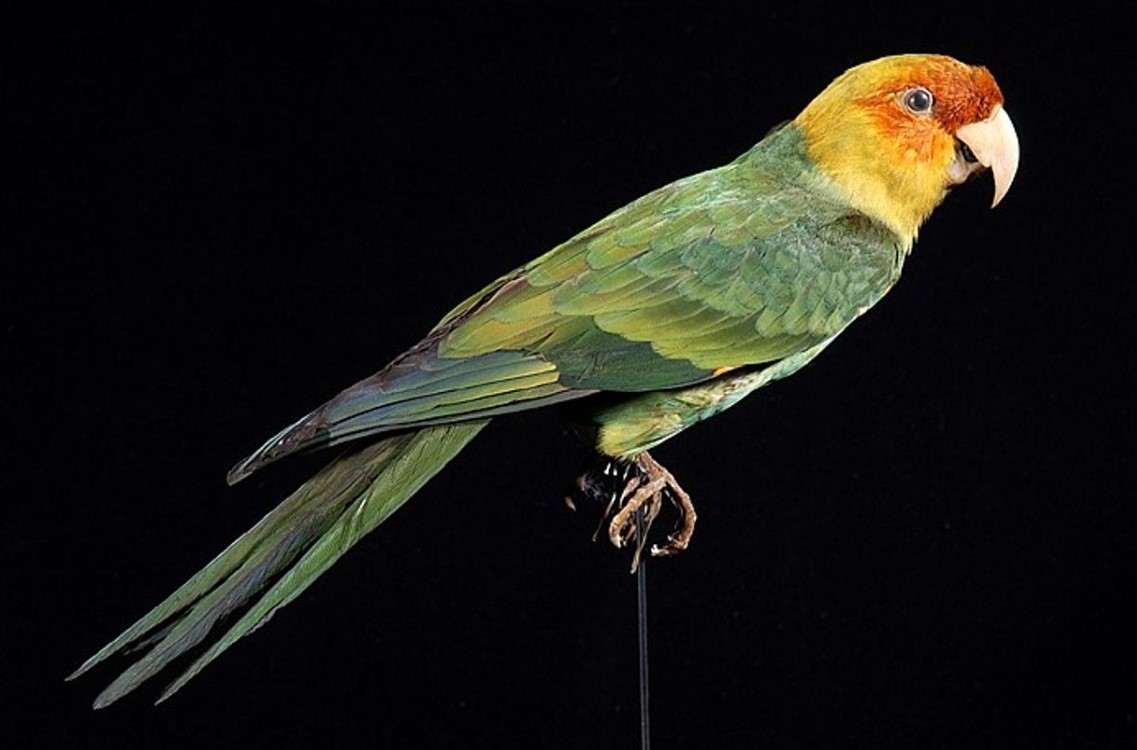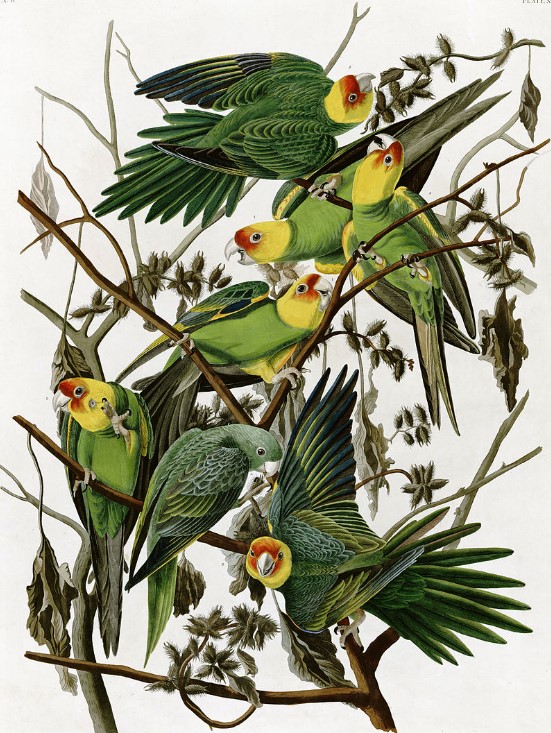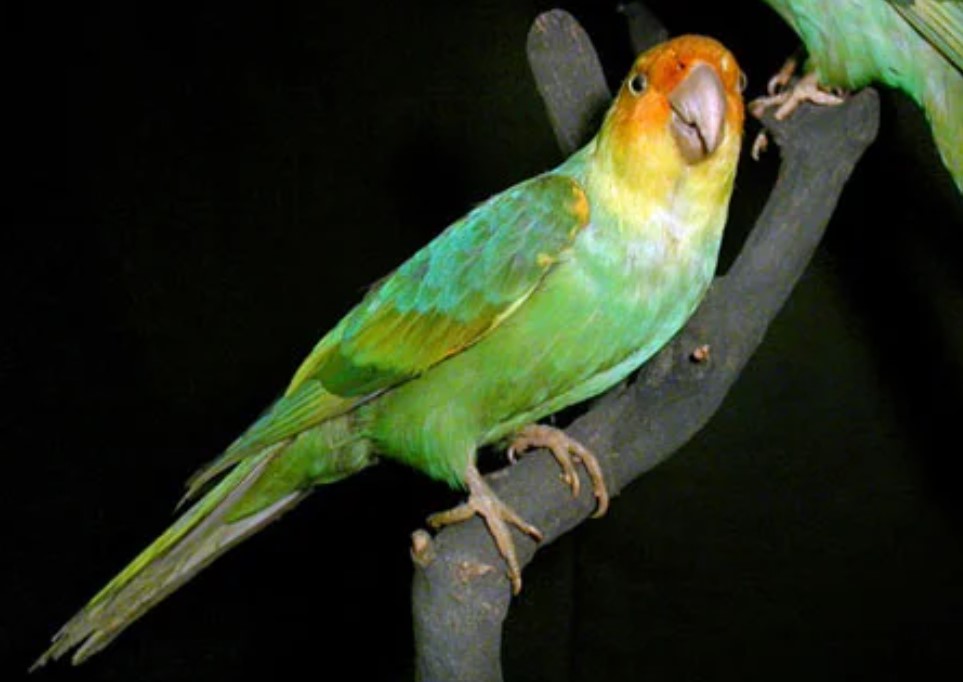





The Carolina parakeet was one of the three species of parakeets that were native to the United States, the other two being the thick-billed parrot, which is now extirpated from its range, and the green parakeet, which is still present in Texas. It was also the only parakeet indigenous to the Eastern, Midwest, and Plains states. They went extinct due to deforestation and hunting.
The Carolina parakeet had similar coloration to the sun conure, its closest relative. The majority of the plumage was green with lighter green underparts, a bright yellow head, and an orange forehead and face extending to behind the eyes and upper cheeks. The outer webs of primaries were marked with yellow towards their base. The bend of the wing, carpal edge, and thighs were yellow as well. Males and females were similar in plumage but males were slightly larger than females. The rest of the head and neck were yellow. The tail was pointed. Young parakeets differed slightly in coloration from adults. The face and entire body were green, with paler underparts. They lacked yellow or orange plumage on the face, wings, and thighs. Hatchlings were covered in gray down, until about 39–40 days old, when green wings and tails appeared.
The Carolina parakeet is the only parrot that was native to the United States. The other two parrots that live there are the thick-billed parrot, which was extirpated from the southwestern United States, and the green parakeet, which is native to Mexico and southern Texas. Carolina parakeets were social animals. They lived in pairs or small groups but were often seen in flocks of 200-300 birds in feeding places. The Carolina parakeet generally had a long life span, but produced few offspring that needed high parental care. Their nesting habits were poorly understood. It is speculated that the nesting cycle was tied to food availability. Therefore populations may have bred at different times of the year depending upon their location. The parakeet nested in the hollow cavities of large trees. They laid two round, white eggs. It turns out, multiple female parakeets could deposit their eggs into one nest. Their diet consisted of grass seeds such as maple, elm, pine, and especially, cocklebur. Due to them eating the toxic seeds of cockleburs, Carolina parakeets were probably poisonous, and French naturalist John J. Audubon noted that cats died from eating them.
Deforestation and hunting caused the species to go extinct. These birds preferred deciduous forests and forest edges. The loss of this habitat undoubtedly contributed to their ultimate demise. After forests were cleared, they switched to seeds of apple, peach, mulberry, pecan, grape, dogwood, and grains. They regularly foraged in grain fields and orchards causing considerable damage. Hunting also played a significant role in their extinction. They were hunted for both decorative use of their colorful feathers, for example, adornment of women's hats, and for reduction of crop predation. This was partially offset by the recognition of their value in controlling invasive cockleburs. A factor that exacerbated their decline to extinction was the flocking behavior that led them to return to the vicinity of dead and dying birds, which enabled wholesale slaughter. The last known wild specimen was killed in Okeechobee County, Florida where they were restricted to by the turn of the century. A pair of Carolina parakeets, Incas and Lady Jane, were kept at the Cincinnati Zoo & Botanical Gardens in Cincinnati, Ohio. Lady Jane died on February 21, 1967, and the last specimen, Incas, died on February 21, 1968. Martha the passenger pigeon was also kept in Cincinnati. The species was declared extinct in 1939.